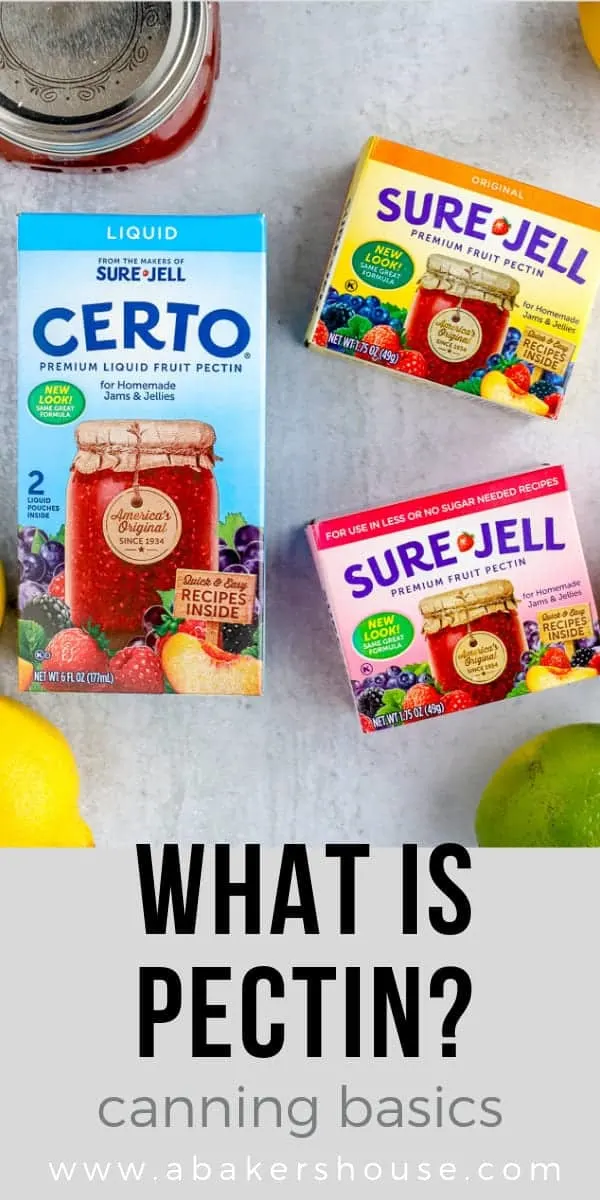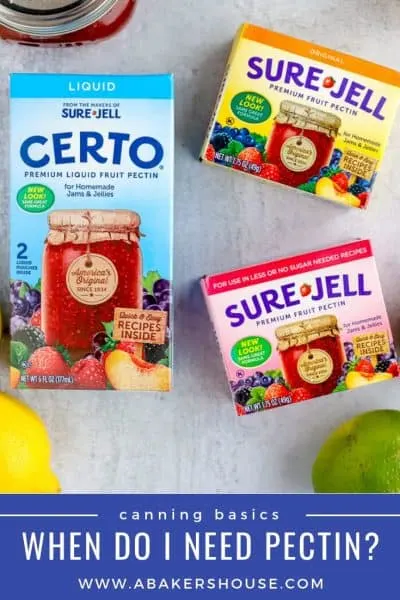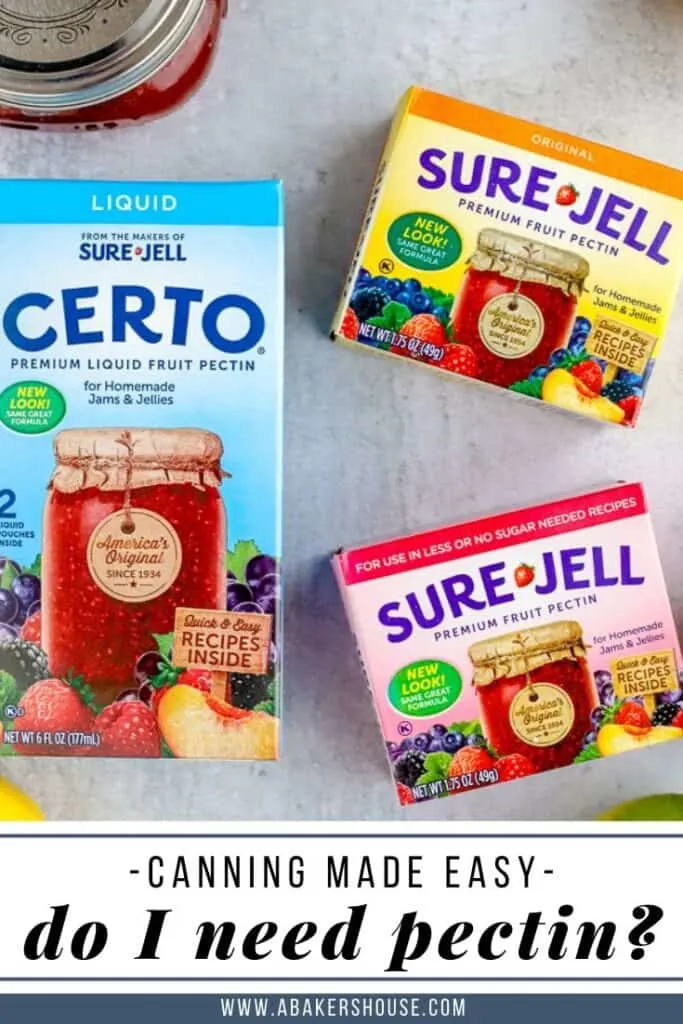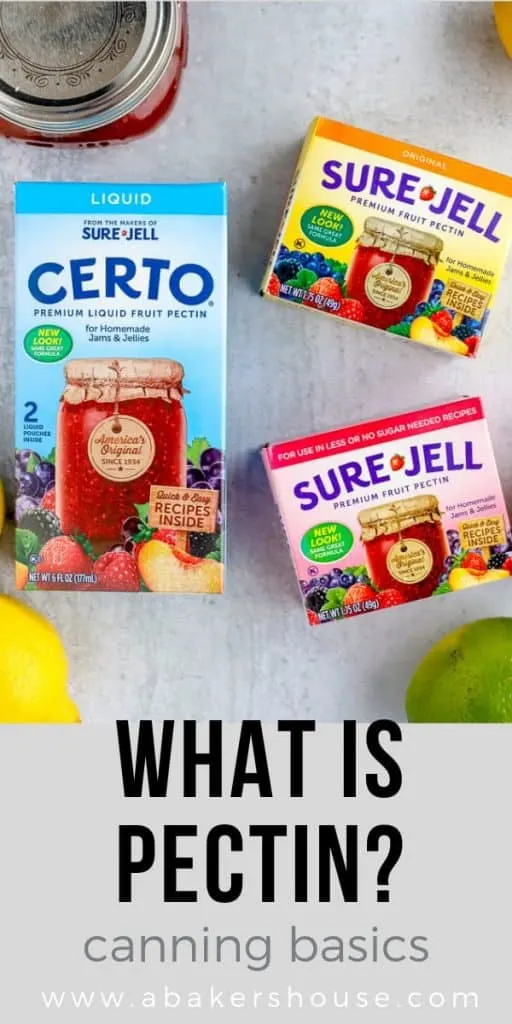Pectin is an ingredient that may be necessary to add to homemade preserves to help your jam set. Learn what fruit have the most pectin.

What is Pectin?
Fruit pectin is a starch that is naturally present in fruits and berries and when heated, it helps provide structure so that your jellies and jams will set.
Figuring out what is pectin and how it works in making preserves is part of learning how to make homemade jams. Making jam is a time consuming process, and achieving the end result of a lovely jar of jelly or jam that sets properly is the goal. Pectin is the substance that helps your fruit gel and different fruits have varying amounts of pectin.
Some of my first efforts in making preserves like marmalade or jelly resulted in delicious jars of sweet fruit mixtures…but they wouldn’t set. By setting I mean that your jam or jelly takes a structure that you can spoon out of the jar and it retains it shape. Jam that doesn’t gel or set would look more like a syrup that runs off your spoon. Learn more about testing for the gel point in this article.
Pectin plays a key role in your fruit preserves reaching the gel point so let’s learn more about how to use pectin in a scientific way so that our preserves turn out perfectly every time.
What’s the difference between pectin and gelatin?
Pectin is not the same substance as gelatin. Pectin is a natural substance (a starch) that is found in fruits. Gelatin is a flavorless food ingredient taken from collagen in animals. Pectin is suitable for vegans and is gluten free as well. Gelatin is not suitable for vegans. Gelatin is not an ingredient in fruit preserves.
Levels of Pectin in Fruits
Fruits have varying levels of pectin. Pectin can be tricky because the level of pectin not only depends on the fruit, but the degree of ripeness in that fruit. The more ripe the fruit, the less pectin it has. So even though some types of fruit are generally high in pectin, if you were able to measure the amount of pectin in a ripe apple versus an unripe apple, the level of pectin would differ.
Certain fruits are known to have more pectin than others. Fruits with high pectin gel more easily when making jams and jellies and do not need added pectin. Conversely, fruits with low pectin do not set easily when making preserves and will need added pectin.
The level of pectin in a fruit will affect how much sugar you’ll need to make preserves. Preserves are a combination of sugar, acid and pectin. Figuring out that balance is the mystery and the beauty of homemade preserves.
Fruits that are high in pectin: Apples (unripe), Lemons, Limes, Plums, Gooseberries, Plums, Quince
Fruits that are low in pectin: Strawberries, Rhubarb, Raspberries, Pineapple, Blueberries, Cherries, Grapes, Peaches, Apples (ripe), Oranges
Sources of Fruit Pectin
If the recipe you’re making calls for added pectin, there are a few options. Remember, if you leave out the added pectin, your preserves will not set and will remain runny.
You can make homemade apple pectin to add to preserves using apples. Tart green apples are recommended in this homemade pectin recipe by Pick Your Own, a great source for all types of preserving.
Or you can buy commercially processed pectin in either liquid or powdered form. Well known brands include Certo, Sure Jell, Ball, and Pomona. Notice which type your recipe requires because the process of adding liquid pectin is different than adding powdered pectin. Powdered pectin often is added to your fruit before the sugar is added. Liquid pectin is generally added after the fruit mixture has come to a boil. Freezer jam recipes require you to boil the pectin separately with water first, then to add it to your fruit mixture.
A special kind of pectin is called “No Sugar Added Pectin” and this commercial type of pectin requires less sugar added to the jam or jelly recipe. Making jam at home really does open your eyes to the large quantities of sugar required for making jam. While it is tempting to cut the sugar in half, remember that your jam will only gel if the recipe has the right balance of pectin, sugar and acid. Drastically cutting the sugar added will result in a running jam. Using No Sugar Added Pectin is an option to try for low or no sugar added jams.

As an Amazon Associate I earn from qualifying purchases.
Do you enjoy making homemade jams? Click here to access to my free printables, including mason jar labels for a variety of jams, jellies, and marmalades!
Recipes without Pectin
Some jam recipe come together and gel with no added pectin. If you are making marmalade, take full advantage of the natural occuring pectin in oranges. The pectin is concentrated in the peel and pith (white layer below the peel), as well as the seeds. Often marmalade recipes will call for reserving the peel, pith and seeds wrapped in a cheesecloth. This cheesecloth bundle then soaks with the fruit and its juices so that the pectin becomes part of the marmalade mixture.
Recipes with Pectin
Pectin is a necessary addition in many jam recipes. Low pectin fruits simply don’t have the potential to create jam that gels.
Sources for this article:
Ball Blue Book of Preserving
The Art of Preserving by Rick Field, Lisa Atwood, and Rebecca Courchesne


Holly Baker started the food blog, A Baker’s House, in 2011. She is the writer, recipe creator, and photographer for the site. Holly loves to bake and shares recipes for gluten free food, canning recipes, as well as traditional desserts too. Her recipes and food photography have been highlighted by BuzzFeed, Reader’s Digest, and She Knows.





Jane
Friday 30th of August 2019
I made 2 batches of blackberry freezer jam. The first batch turned out perfect. The second was made with blackberries past their prime and were very mushy. The jam turned out very runny. Is there anything I can do to thicken it up before I put in freezer? I used pectin and a lot of sugar for both batches as the recipe called for.
Holly Baker
Friday 30th of August 2019
It's possible to try to cook the jam a bit longer until you get closer to the consistency you'd like. You could add more pectin as well when you process it a second time. If that doesn't work, perhaps just use the runny jam as a sauce for ice cream or yogurt. It will still taste great!
Liz
Tuesday 23rd of April 2019
Hi, Holly!!
I probably haven't popped by your blog since the Twelve Loaves days! Abbe said you'll be at the EFC. Please say hi if you see me (it's a mob scene of bloggers!) and I'll look for you, too. Not arriving until Thursday morning :)
See you soon!
Holly Baker
Tuesday 23rd of April 2019
Hi Liz, It would be so nice to see you! I arrive early Thursday morning too. Looking forward to it! -Holly